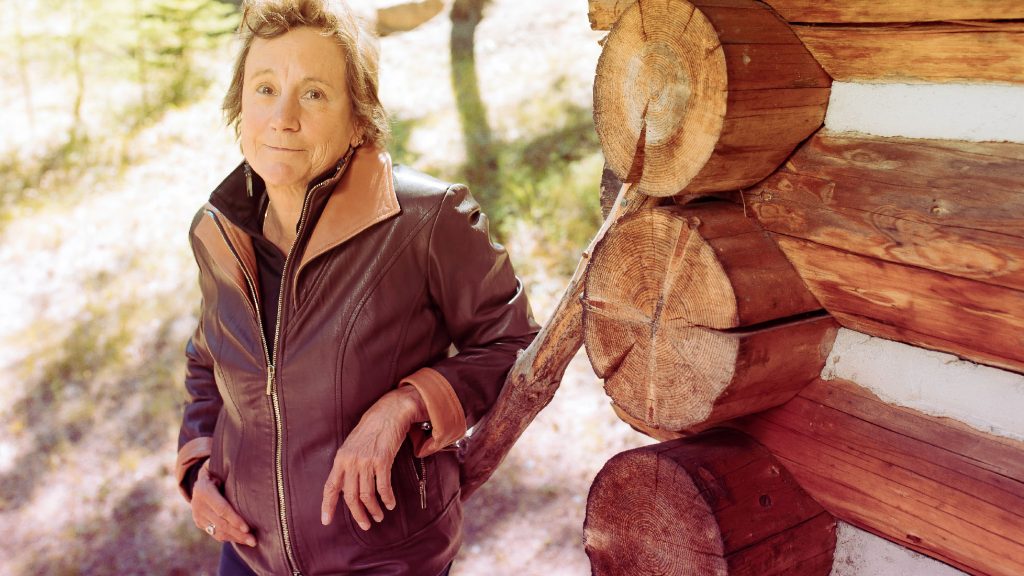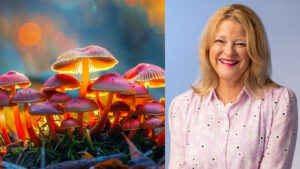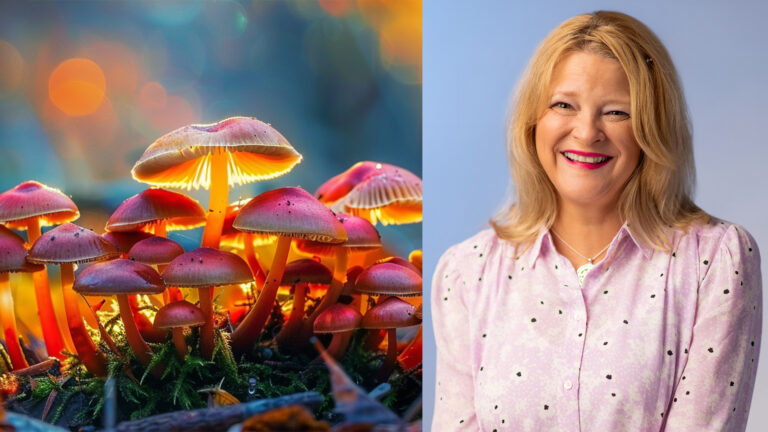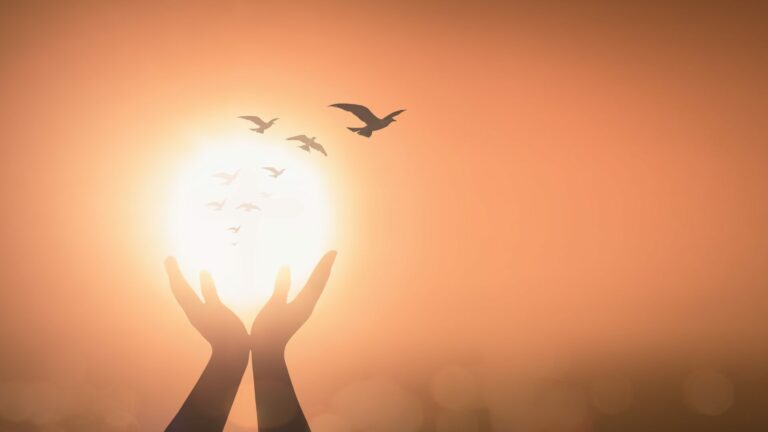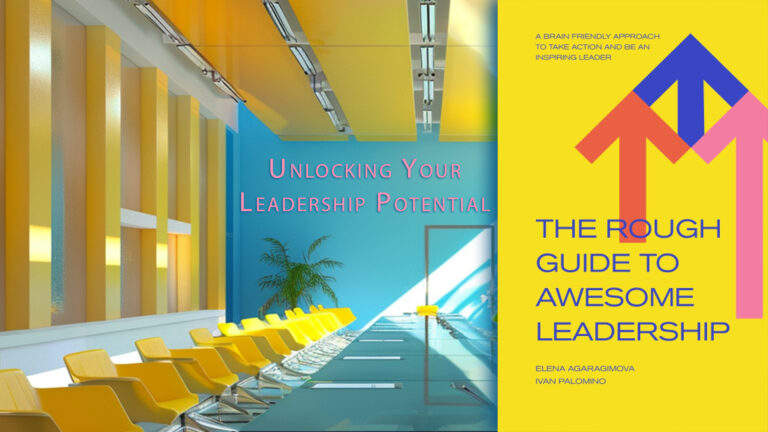Imagine living in the woods, in the cabin you built, living the best life creating work of art, and enjoy each moment. If you’re dreaming of a life that beautiful, you’ve got to hear it from Yvonne Pepin-Wakefield, who’s living this dream. How exciting! Yvonne is an internationally noted artist, arts educator, and author of the wonderful “Babe in the Woods” book series. We were just as curious as you may be right now, so we tried to get some questions to her about her journey, inspiration, and the latest project she’s working on. And here’s what she had to say.
Yvonne Pepin-Wakefield, you’re an internationally exhibited and published artist and author. We’d love to start by asking what you enjoy the most, creating art, building, teaching, or writing?
I think with the exception of writing, they all share similar expenditure of energies and rewards. When I’m making art, I’m channeling or conveying the matter at hand, which evolves into a three- or two-dimensional creation. Building, though much more physical, lineal, and static result-based, draws on similar skill sets. Teaching to me is also an art form. I have to adapt lessons based on the age, ability, or culture in which I’m teaching. Combining senses with subject knowledge, I craft a line of inquiry that relates to a particular student or student body. More than knowledge-based outcomes, such as test scores, I value the process of learning and how it manifests into self-reflection and further inquiry and exploration of a topic or skill. Writing, on the other hand, is a solitary process, one for me that is really a literal stream of consciousness expression.
Your book, Suitcase Filled with Nails: Lesson Learned from Teaching Art in Kuwait was adopted into the college curriculum. What would you say makes your book so sought-after?
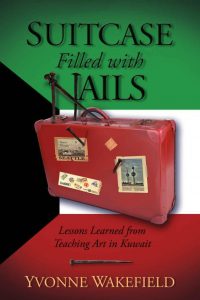 First, I need to address a pretty blanket stereotype that Kuwaiti women are oppressed and treated poorly. This is actually a universal condition and not specific to a culture or sex. I went to Kuwait with this same misunderstanding fueled by media. What I discovered, after six years of teaching there, is that Kuwaiti women share entitlement and a level of care that is unparalleled in most cultures.
First, I need to address a pretty blanket stereotype that Kuwaiti women are oppressed and treated poorly. This is actually a universal condition and not specific to a culture or sex. I went to Kuwait with this same misunderstanding fueled by media. What I discovered, after six years of teaching there, is that Kuwaiti women share entitlement and a level of care that is unparalleled in most cultures.
Kuwait is a welfare society that takes care of its population from the cradle to the grave. My student’s university tuition and many other costs associated with their education were paid for by their government. Some of these students received further government support to complete their doctorates abroad. The government also paid for their and their family’s travel and housing expenses. I am really proud to say that I am now in the position to return to these students who referred to me as “Doctora,” that same title.
I think when people first start to read Suitcase Filled with Nails, they are expecting a repagination along the lines of stereotypical Middle East women. What they find is that women students a continent away share similar positions in and out of the classroom and that wearing a veil or head covering is not a statement of oppression. For many Kuwaiti women, it is to show their religious and family values.
Was Suitcase Filled with Nails: Lesson Learned from Teaching Art in Kuwait the first book you wrote? What was the inspiration behind writing the book?
From my writer’s viewpoint, Suitcase is my first book. I published some journals in the past, but they were just that, mostly unedited, expressive vignettes without an arc. I was actually writing Suitcase when I was still teaching in Kuwait. When I returned stateside, I dove into a mess of notes and descriptions of experiences to shape the book. I was inspired to write it because it is a good story. When I went to Kuwait, I did not have an agenda. I went entirely to teach, and my story is not diplomatic but a straightforward narrative on my experience in a Kuwait government-run college for women. I’ve had people contact me to say they read Suitcase before deciding to accept a job in the Middle East because although it is not a travel guide, it does provide a kind of map for what one can experience in this part of the world.
Did you enjoy your time in the Middle East? What is your best memory from that time?
One February morning, I was walking across campus to teach a class. It was 80 degrees, there were dates on the palm trees, doves were cooing, the sky was pure blue, and beyond this serene beauty, I thought, “I’ve been going into a classroom since I was age five,” and maybe it was time to stop it because the misogynistic, tribal, dominated politics of the university were slowly killing me. Then I thought, this is such a unique and rare situation. Despite the discomfort, where else can an American woman be found teaching art to Muslim women and enjoying it as much as I believe most of my students did. So, my fondest memories were teaching behind closed doors, taking students on outings, and getting to know my students and their families. One other great experience was desert biking. On the weekends, I’d meet a group of cyclists at about 5 am and we would bike all over the desert. Some weekends we would head to the Saudi border; other weekends, the Iraqi border. weekends, the Iraqi border. One time some Bedouins invited us into their tent for dates and Arabic coffee. Another time we biked through the terrain that over a decade before was where General Schwarzkopf drove out Iraqi forces during Desert Storm.
In 2018, a documentary titled Yours in Sisterhood premiered at Berlineal. Could you share some memorable moments from your interview it included with filmmaker Irene Lusztig at your log cabin?
Irene and her assistant came to film the day after I was allowed up to the cabin after the 2015 Canyon Creek Complex Fire. It was saved from burning because fire crews put three pumps in the creek aimed at the cabin. Water was blasted clear through the chinking, and it was soaked inside. While we were driving up in my truck, I saw a fawn curled under a charred tree, the surrounding 110,000 acres were burnt up, and I thought it was so amazing to see life among such blackened bareness. It seemed strange that only a month before, everything was lush forest, and now Irene had only this to see. When she gave me a copy of the handwritten letter I’d penned in 1974 about building the cabin, I was impressed by its tight penmanship and the fact that Irene had selected it from among thousands of letters written to Ms. Magazine, the basis of her documentary, but embarrassed by the youthful pomposity of it.
Who is the series Babe in the Woods for? What’s your main purpose behind writing this series?
Whether it is one book or the entire series, it is for anyone who wants to read a story that is simply told about surviving the wilderness within and outside of oneself. I wrote the series because one book could not contain my over a four-decade-long relationship with this wilderness log cabin. It begins with an 18-year-old neophyte orphan who leans to use a chainsaw and ax and runs in the mountains wearing only moccasins.
Book two, Self Portrait, is more about this girl getting a grip on learning to live with the surprises in the woods while building a second log structure. The third book, Babe in the Woods: Path of Totality (currently in editing), brings the story full circle and shows a 60-year-old widow with titanium hips during a worldwide pandemic, still doing the same things in the wilderness she did as a teenager.
Your first book from the three-book series, Babe in the Woods: Building a Life One Log at a Time released last month. For those who haven’t read it yet, what can they expect out of the book?
Building a Life One Log at a Time shows the origins of a girl who had an idea the night she was orphaned. It evolves into the manifestation of this idea to build a log cabin in the wilderness and shows a teenage girl learning to use tools built for men and working in what, back then, was seen as traditionally male work. It is also a story about adapting and overcoming internal and external challenges and environment, healing through bone-breaking work, and learning to trust in strangers and accept personal independence.
If you were to share the one lesson you’ve learned from the woods, the wilderness, and life in the cabin, what would it be?
Perseverance. When something doesn’t work, try another direction or tool. There were so many times when working in the woods I just wanted to say f-it and give up. But I knew I was the only one on hand to instigate and finish a project. If I gave into failure, be it physical or psychological, I would have never gotten anything done—buck up. Don’t whine. And don’t expect anyone but you can help you.
Why do you think so many of the big-city dwellers opting for an off-the-grid lifestyle?
I do not have an answer for this. I do know that some of my millennial friends from big cities have chosen to leave and move to a more rural environment. But they are not living off the grid. Only more remotely. Couples find one partner can have a job in the community, and the other can telecommute. It is less expensive and less mentally draining. And they are learning that rural living is simpler, less emotionally draining because of the lack of crowds and traffic.
You’re about to release the next book in the series, Babe in the Woods. Is it going to be a more personal account of your experiences living in the woods?
 Self Portrait is a story about spending three full summer months alone at the cabin after it was built. It is a story first about dealing with fear and rogue bears which inspired me to engage in a post-log cabin building project…I was determined to build another log structure alone as a test of my skill level. Although I did need help with much of the building, I did it on my own. It is also a story about my artistic development. In between building and all the work required just to live without electricity or running water, I would draw and paint. I bought a French easel and had leather straps grommeted to it so I could pack back with it. I taught myself how to work on location in all types of weather and light.
Self Portrait is a story about spending three full summer months alone at the cabin after it was built. It is a story first about dealing with fear and rogue bears which inspired me to engage in a post-log cabin building project…I was determined to build another log structure alone as a test of my skill level. Although I did need help with much of the building, I did it on my own. It is also a story about my artistic development. In between building and all the work required just to live without electricity or running water, I would draw and paint. I bought a French easel and had leather straps grommeted to it so I could pack back with it. I taught myself how to work on location in all types of weather and light.
Self Portrait also gives a glimpse into what I usually write about in metaphor. After I was orphaned, I was free-floating in a Catholic Middle-Class system that didn’t care about the kid suddenly thrust into abandonment. For four years, I was sexually, physically, psychologically, and financially manipulated and abused. When I was in that muck and mire, I could not delineate between caring and grooming. It was not until after I built the cabin and had time to reflect on my past, instead of basic survival, that I realized that abuse and made me sick to my stomach and heart. This is the part in Self Portrait where I go to the creek and paint. And later, paint river rock roughed up and smoothed by seasonal peaks and lows.
